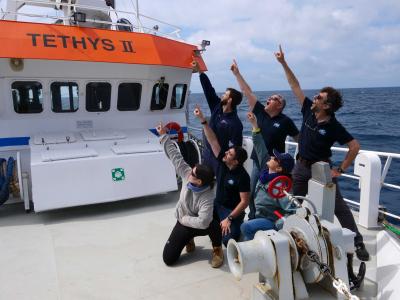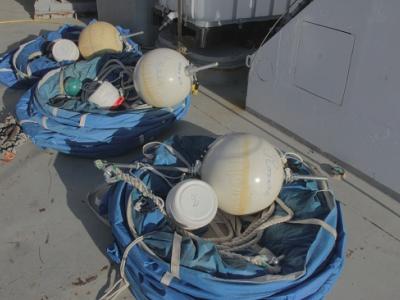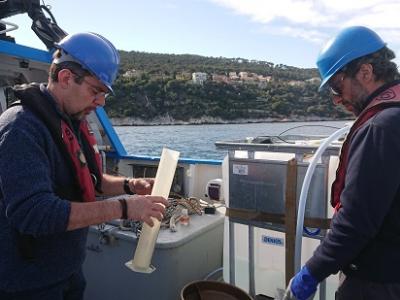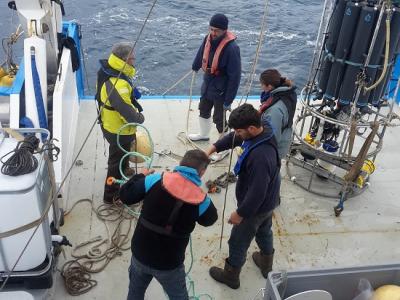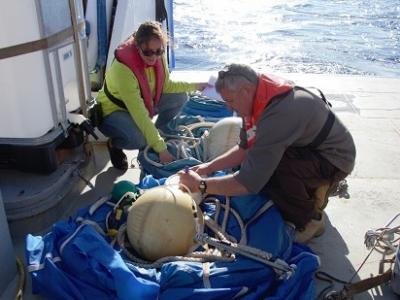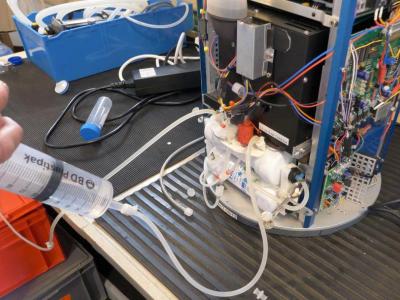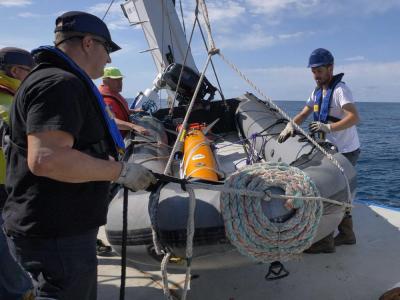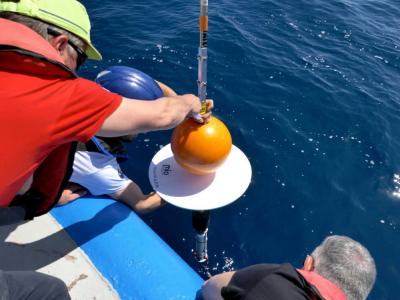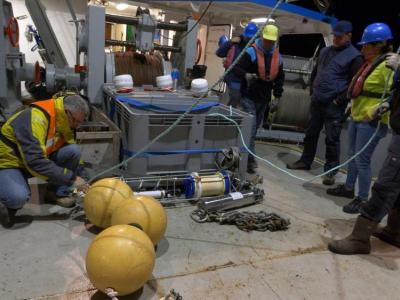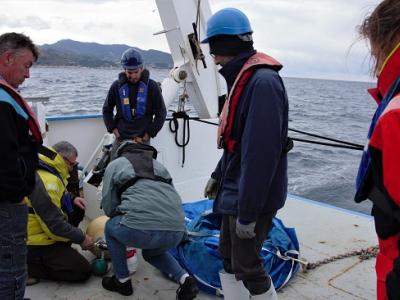FUMSECK - A cruise of the project BIOSWOT
 |
Head of mission : Stéphanie Barrillon - MIO
In the past decades, both modelling and theoretical studies have identified the fine scale (small eddies, current filaments of the order of 10 km) as a dynamical regime with large consequences for planktonic ecosystems. Modellers also generally highlight the need for in situ measurements at the fine scales. Nevertheless, this represents a big challenge due to the ephemeral nature of fine scale structures. Moreover, in order to study physical-biological coupling at the fine scale it is crucial to perform biological measurements at high frequency.
The FUMSECK (Facilities for Updating the Mediterranean Submesoscale - Ecosystem Coupling Knowledge, chief scientist S. Barrillon, MIO) cruise is a one-week technological cruise, from April, 30, 2019 to May, 05, 2019, in the Genoa gulf in the Mediterranean Sea, onboard the R/V Téthys II. It aims at performing several technological tests of some instruments used for the study of the fine scale processes and dynamics (from 0.1 to 100 km for a lifetime from several days to several weeks).
The first test category is the study of the MVP (Moving Vessel Profiler) tracked instruments behaviour: SSFFF (Single Sensor Free Fall Fish, so called "small fish”) and MSFFFII (Multi Sensor Free Fall Fish, so called "small fish”). In particular, we will focus on the rotative behaviour of the big fish during its falling and raising, the connectics between the instrument and the MVP cable, between the platform and the boat depth sensor, and between the platform and the PC used to analyze the data, hence testing the whole data acquisition chain.
Secondly, we will experiment the release of a sample of biodegradable fluorescent micro-particles in order to study their dispersion and detectability using cytometry. This study will include a test of the pumping system for the water going into the cytometer.
The last category concerns the exploration of several methods to access the measurement of the current velocities vertical component, using different ADCP (Hull-mounted ADCP, Fixed-depth or profiling L-ADCP, Free-Fall ADCP, and Sentinel), a prototype of a vertical velocity profiler, and a glider.
This work is part of the project BioSWOT funded by the CNES (PI F.d’Ovidio, LOCEAN-IPSL, co-PIs A.M.Doglioli and G.Grégori, MIO), that aims at paving the way to the scientific exploitation of the future satellite SWOT (Surface Water and Ocean Topography) observations beyond physical oceanography, focusing in particular on current biophysical questions.
Besides guaranteeing an optimal exploitation of SWOT data from the beginning of its mission by a large interdisciplinary community, this preparatory activity will be critical for not missing opportunities of interdisciplinary in situ experiments during the SWOT mission, in particular for the fast sampling phase, in which high temporal resolution will also be provided.
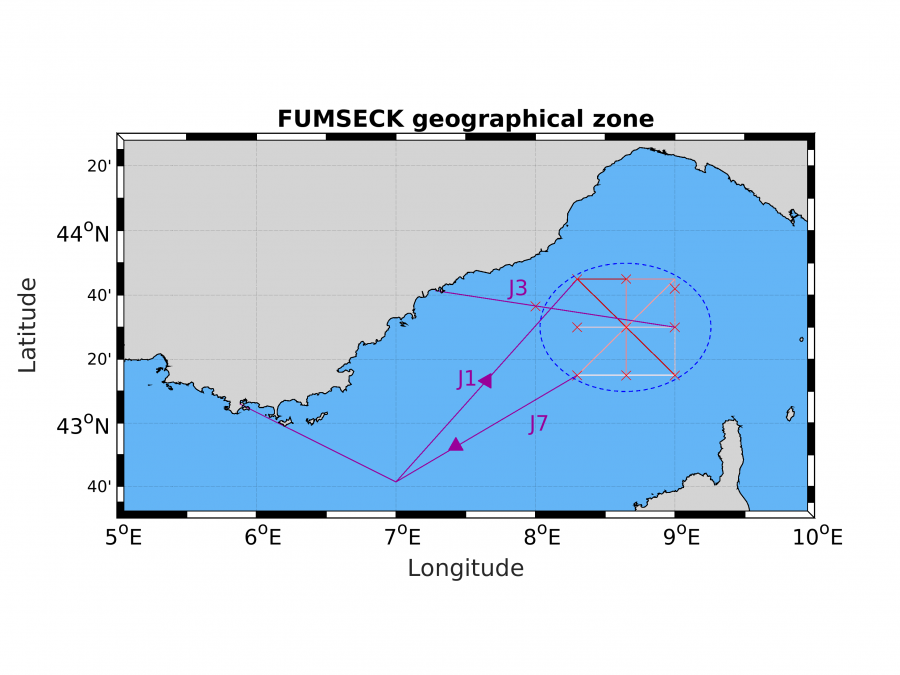 |
|
Figure 1: Geographical zone and stations of the FUMSECK cruise. Trajectory example in the presence of an eddy. |
The Moving Vessel Profiler
The Moving Vessel Profiler was used during the FUMSECK cruise (April-May 2019) onboard the R/V Téthys II, in the Ligurian Sea to study fine-scale physical structures.


